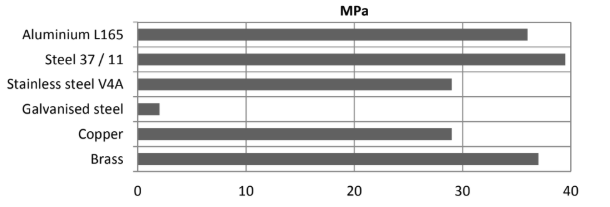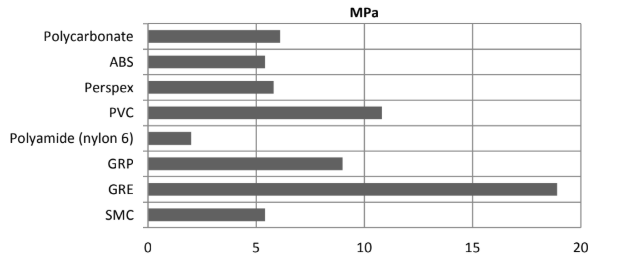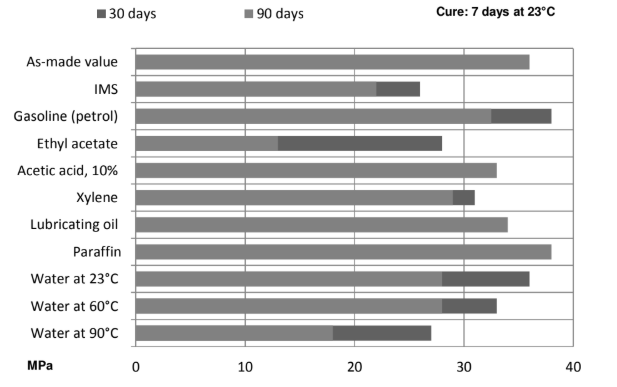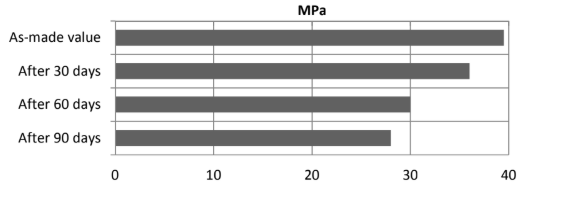Enhanced TDS
Identification & Functionality
- Chemical Family
- RTU Product Type
- Technologies
- Product Families
Features & Benefits
- Ready-to-Use Product Features
- Features and Benefits
- Systems suitable for hand or machine mixing with selected hardeners
- 10 minute work-life, 20 minute handling strength
- Gap filling to 5mm
- Bonds well to a wide range of metals and plastic materials
- Very good Temperature resistance
Applications & Uses
- Compatible Substrates & Surfaces
- Cure Method
- Processing Information
Pretreatment
The strength and durability of a bonded joint are dependant on proper pretreatment of the surfaces to be bonded, however the methacrylate adhesives can be used effectively with little surface preparation.Ideally joint surfaces should be cleaned with a good degreasing agent such as acetone, iso-propanol or proprietary degreasing agent in order to remove all traces of oil, grease and dirt. Low grade alcohol, gasoline (petrol) or paint thinners should never be used. The strongest and most durable joints are obtained by either mechanically abrading or chemically etching (“pickling”) the degreased surfaces.
Mixing ratio
Parts by weight
Parts by volume
Agomet® F330 100 100 100 100 100 100 Hardener Powder 3 (2–5) Hardener Paste red
3 (2–5) 3 (2-5) Hardener K 100-1 Red
10 10 For mixing by hand use hardener powder or paste homogenous. For automatic metering units use Hardener K 100-1 Red at 10:1 ratio by volume. Mixing by machine can be made
using commercially available static mixers.Application of adhesive
Agomet F330 can be processed in temperatures ranging from 15 to 30°C. Higher temperatures may significantly ® reduce the work-life. The resin/hardener mix is applied directly to the prepared and dry joint surfaces. Apply adhesive directly to one surface. A layer of adhesive 0.15 to 0.25 mm thick will normally impart the greatest lap shear strength to a joint, although joints of up to 5mm gap can be assembled. The joint components should be assembled and clamped as soon as the adhesive has been applied. An even contact pressure throughout the joint area will ensure optimum cure.Mechanical processing
Specialist firms have developed metering, mixing and spreading equipment that enables the bulk processing of adhesive. We will be pleased to advise customers on the choice of equipment for their particular needs.
Equipment maintenance
All tools should be cleaned before adhesives residues have had time to cure. The removal of cured residues is a difficult and time-consuming operation. If solvents such as acetone are used for cleaning, operatives should take the appropriate precautions and, in addition, avoid skin and eye contact.
Regulatory & Compliance
- Certifications & Compliance
Technical Details & Test Data
- Typical Cured Information
Average lap shear strengths of typical metal-to-metal joints (ISO 4587) (typical average values)
Cured for 7 days at 23°C and tested at 23°C
Pretreatment - Sand blasting
Average lap shear strengths of typical plastic-to-plastic joints (ISO 4587) (typical average values)
Cured for 7 days at 23°C and tested at 23°C
Pretreatment - Lightly abrade and isopropanol degrease. Note - failure modes are mainly substrate failure
Lap shear strength versus temperature (ISO 4587) (typical average values)
Cure: = 7 days at 23°C
Roller peel test (ISO 4578) at 23°C (typical average values) : 7.2 N/mm
Glass Transition Temperature (Tg) : 54°C (Cured 7 days at 23°C)
Tensile strength (ISO 527) (typical values) : 14 MPa
Elongation at break: : 3.5%
Coefficient of thermal expansion (-30°C/+30°C) : 60 x 10⁻⁶/⁰K (Cured 7 days at 23°C)Lap shear strength versus immersion in various media at 23°C (typical average values)
Substrate – gritblasted aluminium
Lap shear strength versus tropical weathering (ISO 4587) (typical average values)
(40°C/ 92% RH), on aluminium, Cure: 7 days at 23°C
Lap strength versus heat ageing (typical average values)
Cure: 7 days at 23°C
Thermal cycling
100 cycles of 6 hour duration from -30°C to 70°C: 33.7 N/mm2
Shear modulus (DIN 53345)
cured 7 days at 23°CTemperature G’ modulus ^ (Tan delta) 30⁰C 1 GPa 8.9 x 10⁻² 50⁰C 0.8 GPa 9.7 x 10-² 70⁰C 0.4 GPa 2.1 x 10⁻¹ 90⁰C 0.1 GPa 3.5 x 10⁻¹ 110⁰C 38 MPa 4.3 x 10⁻¹ 130⁰C 13 MPa 4.7 x 10⁻¹ - Curing Speed Information
Typical times to minimum shear strength
Temperature °C 0 10 15 23 40 Cure time to reach hours 1 - - - - LSS > 1N/mm² minutes - 40 30 22 10 Cure time to reach hours 1½ - - - - LSS > 10N/mm² minutes - 60 35 25 12
Safety & Health
- Handling Precautions
Our products are generally quite harmless to handle provided that certain precautions normally taken when handling chemicals are observed. The uncured materials must not, for instance, be allowed to come into contact with food- stuffs or food utensils, and measures should be taken to prevent the uncured materials from coming in contact with the skin, since people with particularly sensitive skin may be affected. The wearing of impervious rubber or plastic gloves will normally be necessary; likewise the use of eye protection. The skin should be thoroughly cleansed at the end of each working period by washing with soap and warm water. The use of solvents is to be avoided. Disposable paper - not cloth towels should be used to dry the skin. Adequate ventilation of the working area is recommended.
Storage & Handling
- Storage and Handling Information
Agomet F330 and associated hardeners must be stored respectively at 2-8°C and at 2-18°C provided the components are stored in sealed containers.
Our products are generally quite harmless to handle provided that certain precautions normally taken when handling chemicals are observed. The uncured materials must not, for instance, be allowed to come into contact with food- stuffs or food utensils, and measures should be taken to prevent the uncured materials from coming in contact with the skin, since people with particularly sensitive skin may be affected. The wearing of impervious rubber or plastic gloves will normally be necessary; likewise the use of eye protection. The skin should be thoroughly cleansed at the end of each working period by washing with soap and warm water. The use of solvents is to be avoided. Disposable paper - not cloth towels should be used to dry the skin. Adequate ventilation of the working area is recommended.
